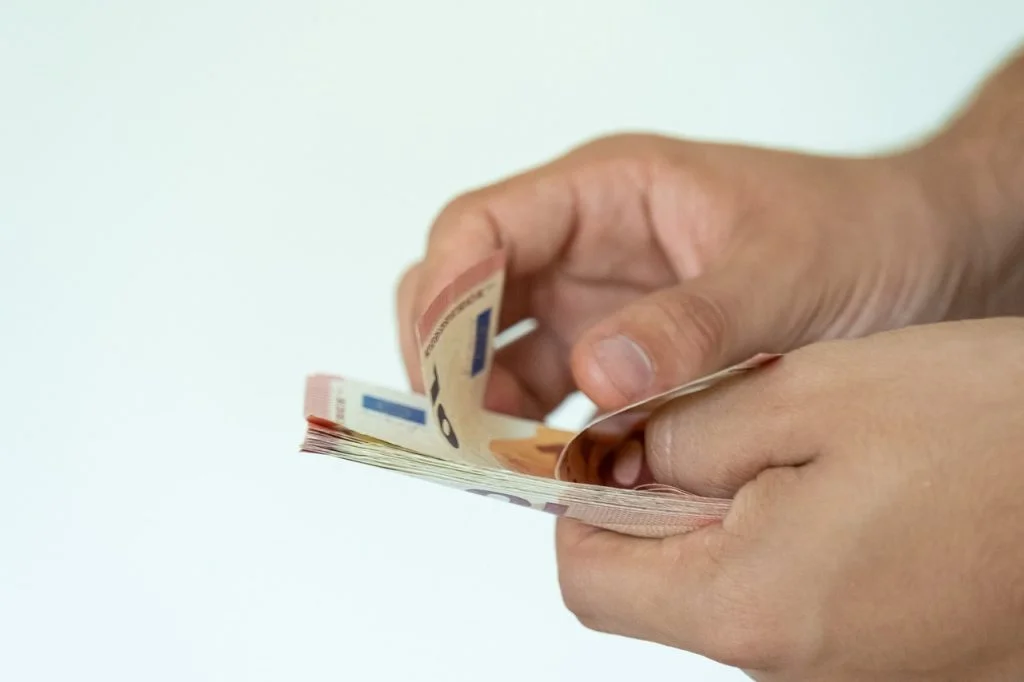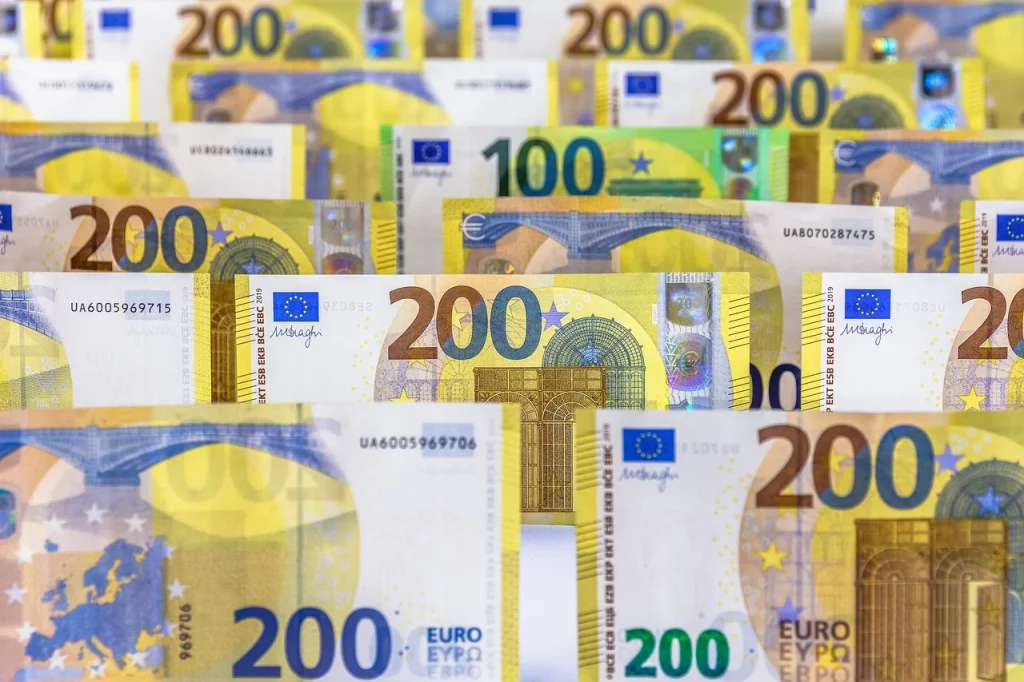If you’ve ever opened your wallet to find nothing but old receipts and a sense of betrayal, you’re not alone. Welcome to my world, where the only thing rising faster than my coffee addiction is inflation. Through years of squinting at price tags and nostalgically reminiscing about ‘the good old days‘ when a dollar could actually buy something, I’ve become somewhat of an accidental expert on inflation.
Have you ever wondered why your grandparents’ stories about prices sound like fairy tales? Let’s dive into these 50 inflation facts that might make us all wish we could time travel to a cheaper era.
Inflation is when you pay fifteen dollars for the ten-dollar haircut you used to get for five dollars when you had hair.
Sam Ewing
Inflation Facts
Before diving into the facts, remember: knowledge is power, especially when it comes to understanding the causes of high inflation. Stick with me till the end, as there’s a quiz waiting to test your newfound knowledge!
- Inflation is the rate at which the general level of prices for goods and services is rising, leading to a fall in the purchasing power of money.
- Hyperinflation is an extremely high and typically accelerating inflation rate, often exceeding 50% per month.
- The Consumer Price Index (CPI) is a common measure used to track inflation by assessing the weighted average of the prices of a basket of consumer goods and services.
- Inflation can be caused by increased production costs, such as higher wages or more expensive raw materials.
- Demand-pull inflation occurs when aggregate demand in an economy outpaces aggregate supply.
- Cost-push inflation happens when prices increase due to rising costs of production and decreased aggregate supply.
- Central banks, like the U.S. Federal Reserve, manage inflation through monetary policy.
- Deflation is the opposite of inflation, where the general price level of goods and services is falling.
- Stagflation is a situation in which the inflation rate is high, the economic growth rate slows, and unemployment remains steadily high.
- The Phillips Curve suggests a historical inverse relationship between rates of unemployment and corresponding rates of inflation.
- Inflation can erode the purchasing power of money, meaning consumers can buy less with the same amount of money over time.
- Some level of inflation is considered normal in a growing economy and is often targeted at around 2% by many central banks.
- Wage inflation occurs when wages increase, often leading to higher spending and potentially more inflation.

- Inflation can cause income redistribution, benefiting some (like debtors) while hurting others (like savers).
- Asset inflation is a rise in the prices of assets, such as real estate and stocks, rather than everyday goods and services.
- Quantitative easing is a monetary policy wherein a central bank buys government securities or other securities to increase the money supply and lower interest rates, potentially leading to inflation.
- Credit inflation is a condition where access to credit becomes easier, increasing spending and demand, which can lead to higher inflation.
- Imported inflation occurs when the cost of imported goods rises, contributing to higher overall inflation.
- During inflationary periods, the value of currency depreciates in terms of its purchasing power.
- Gold and other precious metals are often considered a hedge against inflation.
- Core inflation excludes volatile items like food and energy prices to provide a clearer measure of inflationary trends.
- Supply shocks can cause inflation if they disrupt production and raise costs.
- Fiscal policy, including government spending and taxation, can also influence inflation.
- During high inflation, interest rates are often increased to control excess spending.
- Creeping inflation is when inflation rises slowly over time.
- Galopping inflation is a more intense form of inflation, where prices increase by double or triple-digit percentages.
- Menu costs refer to the costs to firms of changing prices, which can increase during periods of high inflation.
- During inflation, fixed-income investments like bonds typically decrease in value.

- Hyperinflation can lead to a loss of confidence in a nation’s currency.
- Some countries use dollarization to combat hyperinflation by adopting a foreign currency, like the U.S. dollar.
- Monetary inflation occurs when there’s too much money circulating in the economy.
- Shoe leather costs refer to the increased costs of transactions during high inflation.
- Inflation can lead to higher costs of living, impacting budgets and savings.
- Inflation targeting is a monetary policy where a central bank aims for a specific inflation rate.
- During inflation, goods and services that are necessities tend to experience less price elasticity.
- Wage-price spiral is a phenomenon where wages and prices continuously increase in response to each other.
- Real interest rates are adjusted for inflation and more accurately reflect the cost of borrowing.
- Indexation is a technique to adjust income, wages, and taxes for changes in the inflation rate.
- High inflation can lead to economic uncertainty, affecting investment and savings decisions.

- Commodity prices, such as oil, can significantly impact inflation rates.
- Expectations of inflation can itself lead to higher inflation as businesses and consumers adjust their behavior in anticipation.
- Seigniorage is the revenue generated by a government by printing money, which can contribute to inflation.
- During inflation, the gap between rich and poor can widen as the rich invest in assets that appreciate in value.
- Price controls can be used as a temporary measure to control inflation, but they can also lead to shortages.
- Structural inflation is caused by the structure of the economy and market inefficiencies.
- Administrative prices, set by the government for essential services, can also contribute to inflation.
- Inflation can affect exchange rates, impacting international trade and investments.
- Long-term inflation expectations are crucial for economic planning and investment decisions.
- Hyperinflation often requires drastic measures, like monetary reform or policy changes, to stabilize an economy.
- Investment in tangible assets like real estate is often seen as a safeguard against inflation.
Inflation Myths

I am sure your economic knowledge is really high at the moment, but now it’s time to see some myths about the topic. How does inflation affect an economy? Is it equal for everyone or not? Let’s see.
- Inflation Means the Economy is in Trouble
Inflation isn’t inherently a sign of a failing economy. It can occur during periods of economic growth, reflecting increased consumer spending. It’s a normal part of the economic cycle. - Inflation Always Leads to Higher Unemployment
This isn’t always true. Sometimes, mild inflation can accompany job growth as businesses expand and hire more workers to meet rising demand. - The Central Bank Can Control Inflation Completely
While central banks, like the Federal Reserve, influence inflation through monetary policy, they can’t control it fully. External factors like supply chain issues or global events also play a role. - Inflation Affects Everyone Equally
Inflation’s impact varies. For instance, it can hit low-income families harder as they spend a larger share of their income on essentials, which tend to rise in price during inflationary periods. - Inflation Always Means Higher Prices for All Goods
Not all prices rise uniformly during inflation. Some sectors may see larger increases due to specific demand or supply conditions, while others might experience modest changes or even price drops.
No products found.
Inflation Quotes

With all the effects of inflation, it was natural for some famous quotes to stay in history. Let me share some of them.
Inflation is taxation without legislation.
Milton Friedman
Milton Friedman highlights how inflation acts as a hidden tax, reducing the purchasing power of money without the need for formal tax laws.
By a continuing process of inflation, governments can confiscate, secretly and unobserved, an important part of the wealth of their citizens.
John Maynard Keynes
John Maynard Keynes points out that inflation can be a tool for governments to reduce the real wealth of citizens in a subtle and often unnoticed manner.
Inflation is the one form of taxation that can be imposed without legislation.
Warren Buffett
Warren Buffett echoes Friedman’s sentiment, emphasizing that inflation is a form of taxation that occurs without the need for legislative approval.
The way to crush the bourgeoisie is to grind them between the millstones of taxation and inflation.
Vladimir Lenin
Vladimir Lenin discusses inflation as a strategic tool to weaken the capitalist class by eroding their financial power through constant inflation and taxation.
Inflation is as violent as a mugger, as frightening as an armed robber, and as deadly as a hitman.
Ronald Reagan
Ronald Reagan dramatically characterizes inflation as a criminal, highlighting its destructive and insidious impact on an economy and its citizens.
Inflation FAQ

Before the quiz, here are the most frequently asked questions about inflation that you can find online. Read carefully, because you will have to prove your knowledge in the next section.
- What are the effects of inflation in the economy?
Inflation can be a bit of a double-edged sword. On one hand, moderate inflation can signal a growing economy, but too much of it can cause problems. High inflation erodes the purchasing power of money, meaning your dollars buy less than before. For businesses, inflation can increase costs, and for employees, it can outpace wage growth, making it harder to make ends meet. - Who profits from inflation?
Believe it or not, some people can actually benefit from inflation. Borrowers can gain, especially if they have fixed-rate loans, like a mortgage. As inflation rises, they repay their loans with money that’s worth less than when they borrowed it. Investors in assets like real estate or stocks might also see gains, as these often appreciate in value during inflationary times. - What are the main causes of inflation?
Inflation usually comes from two main sources: cost-push and demand-pull. Cost-push inflation happens when the costs of production increase (like raw materials or wages), leading to higher prices for consumers. Demand-pull inflation is when there’s a higher demand for goods and services than what’s available, causing prices to rise. - What are the different types of inflation?
Inflation isn’t just one-size-fits-all. There’s creeping inflation, which is mild and generally considered normal. Then there’s walking or trotting inflation, which is more noticeable and can start to strain consumers’ purchasing power. Galloping inflation is more severe and can destabilize an economy. Hyperinflation is the extreme, where prices skyrocket uncontrollably, often leading to a loss of confidence in the currency. - What does a high Consumer Price Index (CPI) mean?
The Consumer Price Index, or CPI, is like a thermometer for the economy’s prices. A high CPI indicates that the prices of a standard ‘basket‘ of goods and services have increased, suggesting a period of inflation. It’s a handy tool for understanding how much more expensive life has become for the average consumer.
No products found.
Inflation Quiz

The time to prove you are a master of economics is now. But remember, if you score zero, your chances of becoming a billionaire in a hyperinflated economy might just skyrocket!
Conclusion
And that’s a wrap on inflation – the economic phenomenon that’s as inevitable as finding crumbs in your keyboard. It creeps up like that one relative at family gatherings who always has a ‘funny‘ joke to tell. We’ve explored the ins, outs, and upside-downs of it, but remember, it’s not all doom and gloom.
Sometimes, it’s just the universe’s way of saying, ‘Hey, maybe try the store brand cereal?’ So, here’s a question for you: If you had to explain inflation to an alien, what would you say? Would you start with the economy, or just show them your last grocery receipt? Let me know in the comments.
3 Sources Used For This Article

